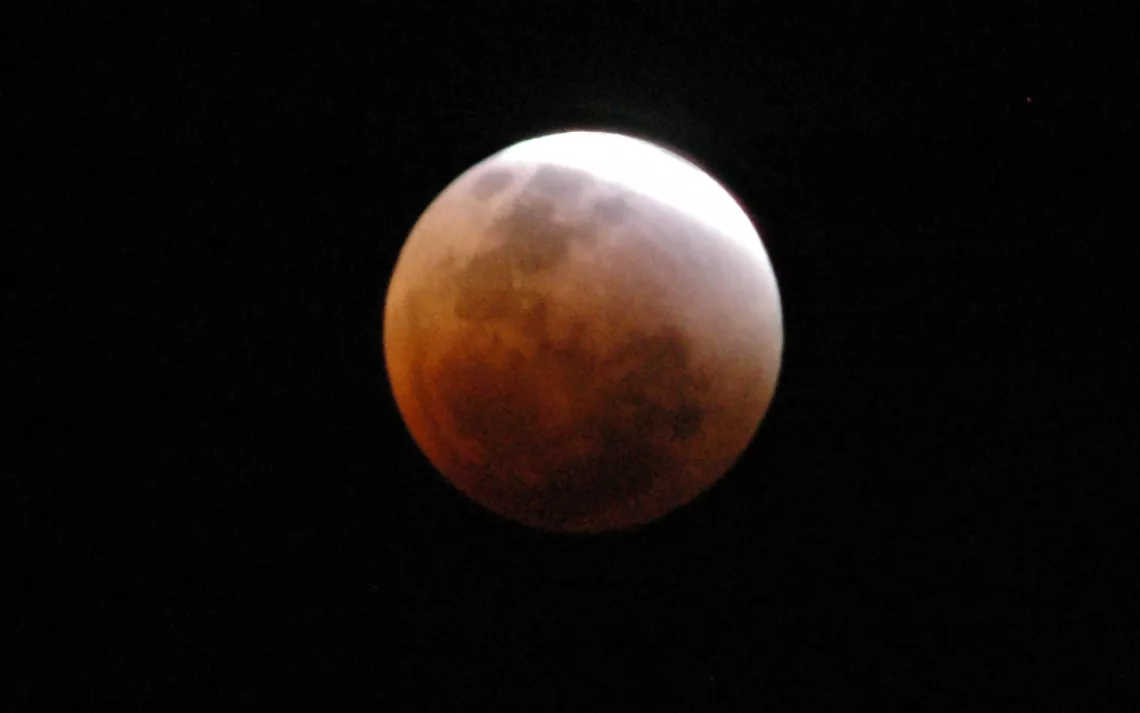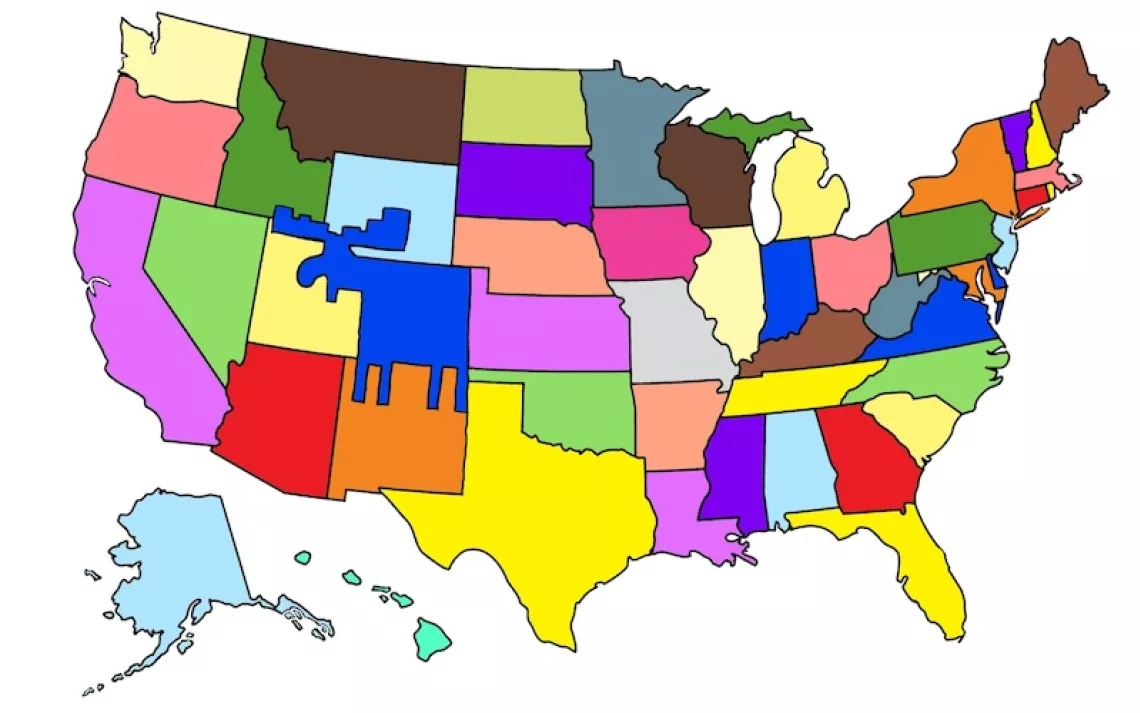April Observing Highlight
Don't miss the lunar eclipse and Lyrid meteors this month.

A partial lunar eclipse from 2007. | Photo by Jenny Rollo
A brief total lunar eclipse will occur in the early morning hours of April 4. This is also the date of the full moon (which is necessary because the moon and sun have to lie on opposite sides of Earth for an eclipse to occur). Western North America will get a good view of the event, as will Alaska and Hawaii. In Honolulu, the partial phase begins around 11 p.m. on April 3, with the total eclipse occurring at 2 a.m. The eclipse wraps up by 5 a.m. For those on the East Coast, the moon will already be setting while the partial phase is ongoing. Those who aren’t aware of the eclipse could be startled to find a “blood red” moon sinking in the west, if they wake before sunrise.
After sunset throughout April, Mars is near the western horizon, its red glow at magnitude 1.4, and brilliant Venus is above it at magnitude -4. Jupiter reigns high near the zenith, not far from the Beehive Cluster of Cancer.
On April 10 and 11, Venus passes close to the Pleiades cluster in Taurus. This autumn constellation sets while spring constellations rise in the east. Mercury slips above the horizon in the west, pulling away from the sun after sunset. April 19 finds a crescent moon beside Mars, with Mercury just below. On April 21, the crescent moon and Venus are both in line with each of the horns of Taurus the Bull. On April 22, Mars and Mercury are a little over one degree apart. Can you see this pair in the glow of the setting sun? Mercury will climb past Mars on this date, becoming easier to see as Mars sinks toward the sun. On the last day of the month, Mercury, at a fairly bright -0.3, will skim past the Pleiades. In May, Mercury will grow dim and fall back toward the sun.
The moon passes Jupiter from April 25 to 26. On the eastern side of the sky, Saturn rises around midnight at the beginning of April, and then pairs with the moon from April 7 to 8. By the end of April, Saturn rises midevening. Saturn and Jupiter will be excellent telescopic targets for amateurs, making late spring and early summer a great time to throw a backyard observing party.
The Lyrid meteors will peak around April 22 this year. The Lyrids appear to emanate from the constellation Lyra, which is just rising in the northeast. Comet Thatcher is the source of this shower. This year the moon will be past new as it heads toward first quarter, which means that it is nearly on the opposite side of the sky from Lyra and sets around midnight. This means mostly dark skies for observers. You can expect about 10 meteors an hour at the peak of the Lyrids.
 The Magazine of The Sierra Club
The Magazine of The Sierra Club







